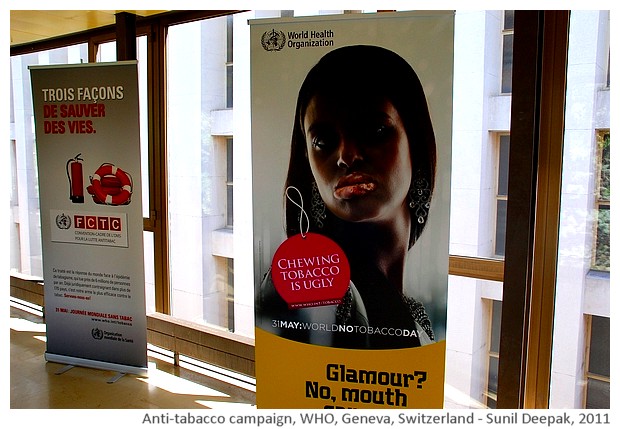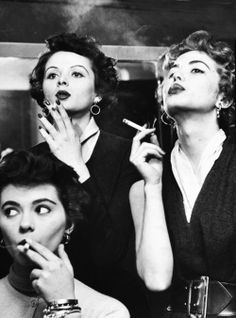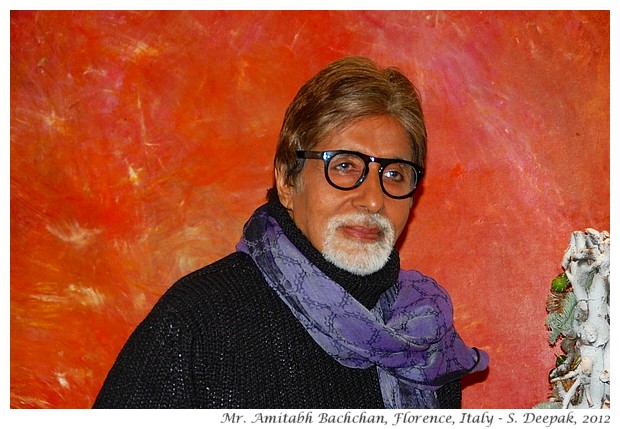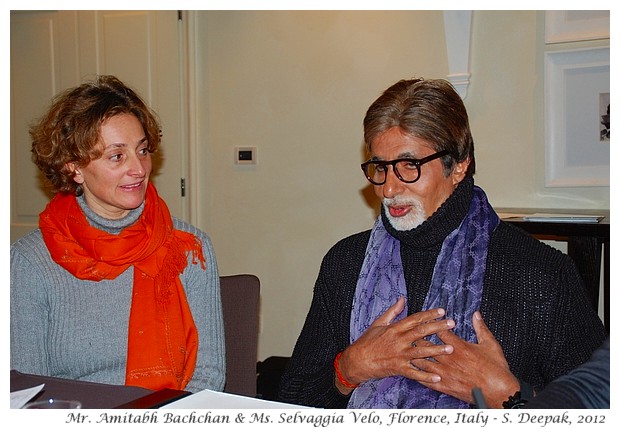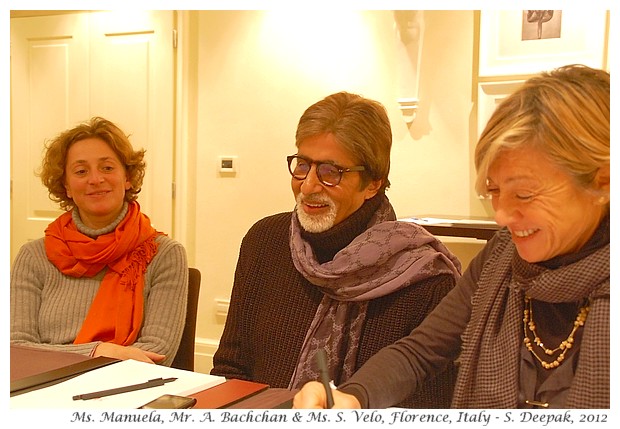Aditya Bhattacharya, son of the film-director Basu Bhattacharya (1934-97) and grandson of film-director Bimal Roy (1909-66) is known in India mainly for his first film as a director, Raakh (1989), which had Pankaj Kapoor, Aamir Khan and Supriya Pathak (image below).
Recently, I was searching for him for my book on Sonali Senroy Dasgupta (1928-2014), known for her love-story with the Italian film-maker Roberto Rossellini in the 1950s.
This post presents an overview about Aditya's life and works. Let me start by explaining why I started searching for him. (All the images are from internet)
Aditya's Sonali Connection
There was a big scandal in the 1950s when Sonali, wife of film-director Harisadhan Dasgupta, had left her husband and gone to live in Europe with Rossellini. Many books have been written about Rossellini.
However, Sonali was a very private person and conceded only few interviews during her life in the 1960s and 70s. Harisadhan lived in India and was not interviewed for the European books. Thus, both Sonali and Harisadhan are almost missing from those books.
Last year, I started to put together a book which could look at this story from the point of view of Sonali and Harisadhan, and their families. For this, I am looking for information about the texture of her days during 1980s-2000s, when the spotlights had moved away from her, leaving her to live in relative anonymity in Rome.
Thus, I thought that Aditya could have provided some information about this period since he had lived in Italy in the early 1990s. Sonali was his mother's cousin and I thought that while in Rome, he must have spent some time with his aunt and her family.
Through my search, I found Aditya and did write to him about Sonali but he did not reply to my message. However, since I had collected information about him, I felt that this would make for an interesting blogpost.
Aditya and His Family
He was born in Bombay in 1965. In a Times of India interview in 2001, he said that "an unstable home environment made him independent early in his life." He was referring to the troubled marriage between his parents, Basu Bhattacharya and Rinki Roy Bhattacharya, which had ended in a divorce. Aditya has two sisters, Chimmu and Anvesha.
About the film-makers in his family, in an interview in 2007 he said: "I never got a chance to spend time with my grandfather. In fact, my first childhood memory is my grandfather’s death. I was three years old. I have few memories with my father too, as I’ve travelled a lot. I did not expect him to die in 1997. That’s the only regret I have, that I wasn’t there when he needed me and didn’t spend enough time with him. ... My father never shot his films on sets. He would shoot on real locations. Which means, he shot at home. So I would be in the middle of the shoot all the time. Anubhav, Avishkaar, Griha Pravesh and Aastha were shot inside our homes. I have worked with him in only on one film called Panchvati. It was shot in Nepal." (Something does not match here. If he was born in 1965, he would have been one year old in 1966 when Bimal Roy had died; perhaps, he was born earlier, may be in 1963)In 1997, when his father had died, Aditya was busy with his first Italian film 'Senso Unico'. The film's editing and music were completed in India. He told in the 2021 interview: "Just 2 days earlier I had spoken to him on telephone while he was in the hospital. Finish your work before coming back to see me, he had told me categorically. After his death when I returned, I was unable to think of anything else."
Aditya's Early Works in Bombay
After finishing high school, Aditya decided that he did not wish university education and decided to become a photo-journalist.
In that period, Shyam Benegal asked him to play a role in his film 'Mandi' (1983), and film-magazines hailed him as "the most handsome actor". In the image below, he is on the left in the film's poster, behind Shabana Azmi.
Apart from a few small roles as an actor, he came out with his first film as a director (Raakh) in 1989, when he was only 25. About Aamir Khan, the hero of Raakh, he said: "Aamir and me were classmates in school. In 1983, we had done a short film called Paranoia. We, along with Mansoor Khan, also had a band together. So we were good friends. He did not want to be an actor, he was quite confused about what he wanted to do in life." In the image at the top, he is with Pankaj Kapoor on the sets of this film - Pankaj received a national award for it (the film had received 3 national awards).
During those early years, he was also visiting Prithvi Theatre, where he met Sanjana Kapoor, daughter of well-known Hindi film actor and producer, Shashi Kapoor. Aditya and Sanjana lived together for a few years, before getting married. The marriage lasted a few months and the couple divorced.
About this marriage, in his 2001 interview to ToI, he said: "I was around 18 or 19 when I started hanging around Prithvi (Theatre). Once Sanjana was asked to help with something, we hit it off, and that was the start, he reminisces. The initial spark led to a long term live-in relationship (six years) and later a relatively short-lived marriage. We were very young. We realised we were better a friends and decided to go our separate ways. But we never lost the respect, that caring for each other, at any time."
Aditya's family has many links to other well-known Bollywood film-families. For example, in 2023, his sister Chimmu Acharya's daughter Drisha married well-known actor Dharmendra's grandson and Sunny Deol's son Karan. (Dharmendra has always been close to the Bimal Roy family - his first film Bandini was with Roy and after Roy's death in 1966, he had helped the family by working free in a film called Chaitali).
Aditya Leaves India and Arrives in Italy
Aditya came to Rome (Italy) in 1990. About his shift to Europe, he said in an interview: "Different people want different things in life. I never dreamt of being famous in Bollywood. I wanted to make films that would make my father and grandfather proud. ... It may sound strange but I wanted to make life difficult for myself ... So I went to Italy the next year and did odd jobs like being a waiter and later, a chef. I also did live editing of television shows in Sicily, a music video for an Italian band, ramp photography… I never called home for help. ... I always feared that I would become a useless guy if I did not struggle and earned things myself. It took me seven years to raise money to make a film. Going through everything there was important for me to become a fuller human being and a better film-maker."
In that same interview, he gave another possible reason for leaving India: "After Raakh, I did a film called Tapori with Mahendra Joshi (a person from Gujarati theatre background who was married to Aamir’s sister Nikhat). He died of a heart attack midway. He was a brilliant theatre person. I didn’t want to do anything for a while, and maybe that’s why I left India."
About why did he settle in Italy, he said: "I was on my way to London, when I had a stopover in Italy for a week. I really liked the place and the people. So I thought it would be nice to write a story there. After making some money, I made a Italian film called Senso Unico in a place called Messina in Italy. No one had ever shot a film there. I fell in love with that place. To make a film in Italian language, in a place I didn’t know, to raise a lot of money and get a producer from London was a big thing for me. I was 31 years old then."
In another interview for an Italian newspaper in 2021, he had talked about watching Fellini's film '8 1/2' at the Film Institute in India and the huge impact that film had had on him and how he had managed to have a coffee with Fellini many years later while he was shooting his own film, 'Senso Unico'. In this interview he also spoke of leaving India: "In spite of the success of my first film, I was unhappy. I didn't want to follow the dictates of Bollywood and I didn't like the attention of some magazines ..."
Aditya in Messina, Sicily (Italy)
Soon after his Rome experience, in 1991 he shifted to the city of Messina in Sicily. Here, he married Maria Giovanna, a Sicilian, and they have two children.
In 1995, after shifting to Messina, his name appeared in the programme of the Messina Film Festival as the director of a 1994 short-film "Fannan", about a local music band called Kunsertu. The festival booklet cites the following other works by him - Indio (1991), Chootey Noì (1992), Contro (1993), Kunsertu Live Acireale (1994) and Mokorto (1994). Probably, these were all short films.
His Italian interview in 2021, also mentions a story about his connection to Messina: "Raakh was shown in a film-festival in Russia. In the festival he met a girl from Messina. Some months later, while in London for discussing some project, he had a stop-over in Rome, and he decided to visit Messina to meet her and some other local persons he had known. He was there for only one week but he knew that he was going to come back to that city. ... He lived there for seven years, working as a video-editor for a local TV station. Since then he goes back to Messina regularly."
Aditya's Films & Work in Europe
In 1995, he started working on the screen-play of an Indo-Italian film called Senso Unico (One Way), which was shot and released in 1997. Though this film was presented in some film festivals in 1999 and later became available on Amazon Prime in UK, it was never released in Italy due to some problems among its producers. This film was about Francesco (Lothaire Bluteau), the illustrator of comic books, who also repairs stolen bicycles, and who falls in love with Yasmin (Laila Rouass), an actress shooting a film in the city. The still from a meeting about the film shows Aditya in the left.
In 2005, he directed a Hindi film, Dubai Returned with Irfan Khan and Divya Dutta.
In 2007, he was involved as a producer in an Indo-Italian film, The Chase, with Vidyut Jammwal and Sidharth Malhotra. Some shooting for this film was done in Italy and it was being directed by Anubhav Sinha, but this film was stalled.
In 2009, he was planning to direct a film called Sandokan in Sicily but probably it was also stalled or the project did not take off.
In 2012, he directed Bombay's Most Wanted (BMW) with Sarita Chaudhury, Jaaved Jafri, Samrat Chakrabarty, Chandan Roy Sanyal and Tannishtha Chatterjee. The film was about a New York journalist, making a film in Mumbai about 3 characters - an encounter specialist policeman, an informer and a bar dancer.
In 2012, he was also planning to make an English film with the actor Rana Daggubati, based in Los Angles titled A Momentary Lapse of Reason but this film did not work out.
It seems that BMW was his last film though recently (2025) he has been seen in UP in India, acting in a serial for his friend Sudhir Mishra, with whom he has already worked a few times.
Conclusions
In 2025 Aditya is is 60-62 years old, his children are grown up. He continues to be active. For example, this year he is supposed to run a film-making course between October to December 2025 at the Catalunya School of Film-making in Spain, focusing on the South Asian diaspora.
Every time, persons make a decision which completely changes the direction of their lives, such as Aditya's decision to leave India and to start afresh in Italy and Spain, it is natural to wonder if they occasionally look back and ask themselves if they had taken another path in that moment, then how would be their life today.
Perhaps, Aditya also has such moments of "what if". However, in the 2007 interview, he had said, "I have no regrets. I have made films which have been appreciated. I have two beautiful kids. I have two homes in two parts of the world. And I have respect from my contemporaries."
***








